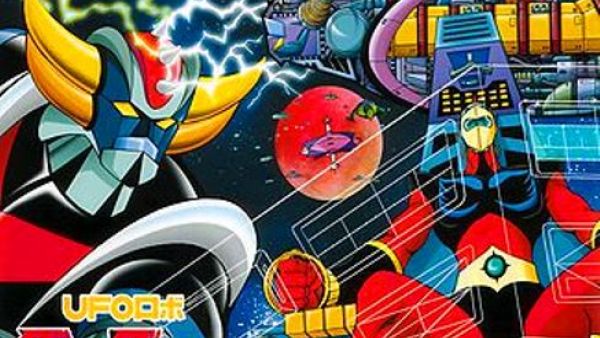Perhaps the single most influential Japanese export to the Middle East is its distinctive style of comic art and animation – manga and anime.
One of the recurrent motifs in conversation with Beirut-area artists is the influence of “Grendizer,” the animated series about the eponymous super robot created by manga artist Go Nagai in the 1970s, which later hatched a line of toys.
It’s no surprise that the manga should also have an influence upon contemporary art in Japan itself. Gemmayzeh’s Ginette Concept Store is nowadays displaying a small exhibition of six acrylic-on-canvas works from 2011 by 37-year-old Tomoki Kurokawa. “Focus,” as the exhibition is called, is a tour de force of manga-influenced art, one that leads viewers into a psychedelic reimagining of the contemporary world.
Kurokawa’s “New Life” (160 x 131 cm) is a colorful evocation of the manga aesthetic. A character is rendered holding a sword in his right hand and a firearm in his left. Other than the figure’s hands, only his thatch of flame-like yellow hair is visible.
His face and body are obscured by billowing white and pink brushstrokes – apparently representing the smoke of discharged weapons and the swirl of movement – and blue lines that might represent light rays, traces of the figure’s own movement or, perhaps, the trajectory of projectiles being shot at him.
Kurokawa’s work leads his onlookers into a world that initiates might find reminiscent of such well-known Japanese cartoons as Dragon Ball Z – in which adventurous characters transformed themselves into ever-more powerful beings to do battle with one another.
There is a stark contrast between the representation of spiraling movement at the center of this piece and the background hues of grey, green and blue. Though the eye is comfortable reading these as stylized versions of the sky and the ground, they are distinctive for their lack of dimensionality. The hues are also sharply delineated like the panels of a comic strip, though, unlike frames, they do not enclose the action.
Such readings seem bafflingly disconnected from the work’s title, “New Life,” until it occurs to you that the work can also be seen as a uniquely manga rendering of a birth. Indeed, how else could a Japanese cartoon character be birthed if not head first, in a swirl of movement, armed to the teeth?
Kurokawa’s “Our Life” is equally puzzling. A quick glance at the piece reveals two characters – a blue-eyed one grinding its teeth and another red-eyed figure – apparently locked in combat. The forms actually occupy the background of the piece, which foregrounds several small stones (apparently falling into the frame as if from a collapsed edifice). These bits of rubble are particularly diverting since the artist’s foregrounding technique approximates the effect of three-dimensionality.
You must look past the stones to see that Kurokawa’s rendering of the two background figures conflates facial features onto their hands, which at once nods to manga’s science fiction roots and gestures (rather bleakly) to surrealist symbolism.
Ginette’s Kurokawa exhibition includes less figurative works. “Flower Thief” (72 x 72 cm) appears to depict a plant whose yellow, red and pink flowers are oddly dis-integrated from its stems, or perhaps a bouquet. In the foreground, a cartoonish rendering of a white-and-blue line of force cuts diagonally across the frame, ending in what looks like an exploding flower on the ground. It seems the flowers are being tossed in the air from the impact of this explosive projectile.
Kurokawa’s unsettling “Soloist” (72 x 72 cm) depicts an odd-looking pink mass, enclosed by blue walls with a series of blue columns projecting from a gridwork surface in the background. At its center this blue mass appears to represent a rose. However, even if you have no idea what this figure represents, or how it is connected to the name of the work, you still may experience some difficulty in prising your eyes from it.
Tomoki Kurokawa “Focus” is on display at Gemmayzeh’s Ginette Concept Store until Feb. 29. For more information please call 01-570-440.








